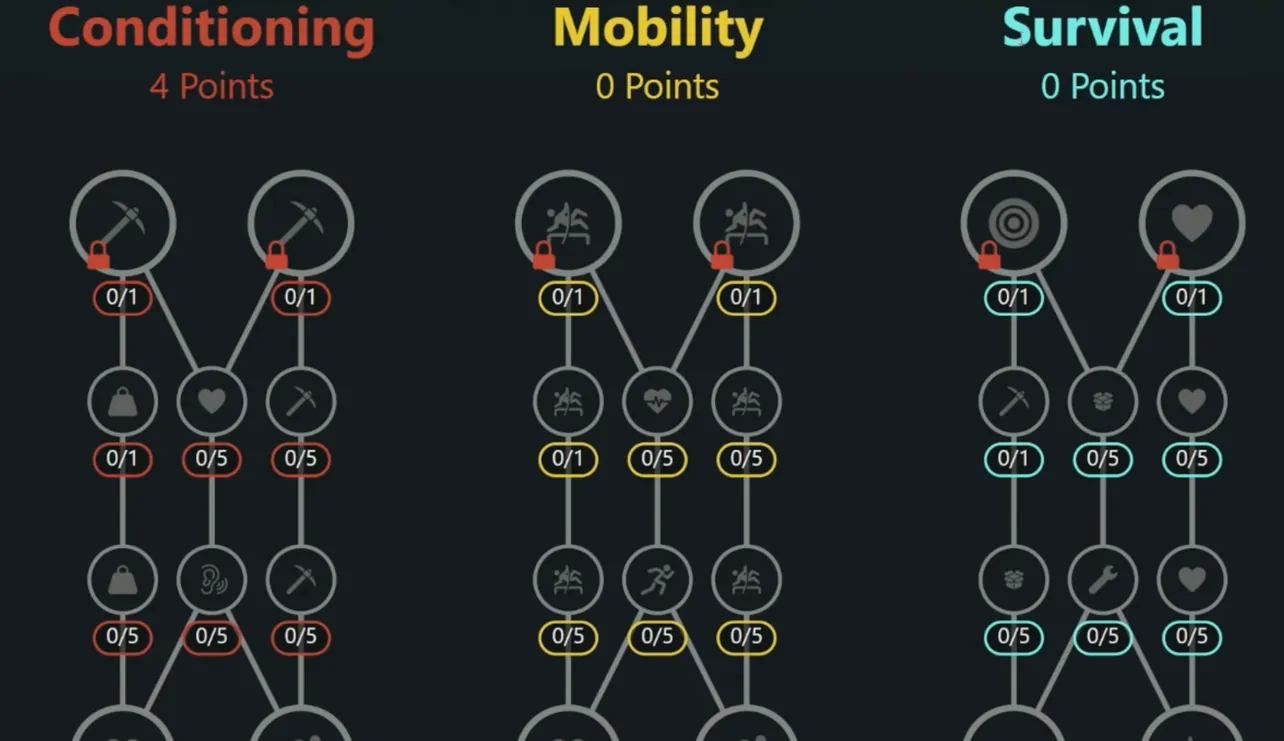ARC Raiders’ skill trees don’t juice weapon damage or reload speeds. They reshape how you move, manage stamina and weight, sneak past patrols, and get through loot interactions with less risk. For solo players, that utility is the difference between limping to extract and walking out consistently with a full pack.
Skill trees at a glance: Conditioning, Mobility, Survival
Each tree leans into a different part of the solo loop:
- Conditioning: Stamina economy and encumbrance relief. This governs sprinting, dodging, climbing, and how much weight slows you down.
- Mobility: Movement quality. Faster climbs, longer runs, and smoother traversal when you need to break contact or reposition.
- Survival: Stealth and looting efficiency. Quieter interactions, faster container reveals, and reduced visibility while crouched.
Solo runs live and die by stamina and weight. Investing in Conditioning early makes your baseline movement more reliable and reduces how punishing heavy gear and full inventories feel. Fully committed stamina/weight nodes can make even bulky shields far less of a drag.
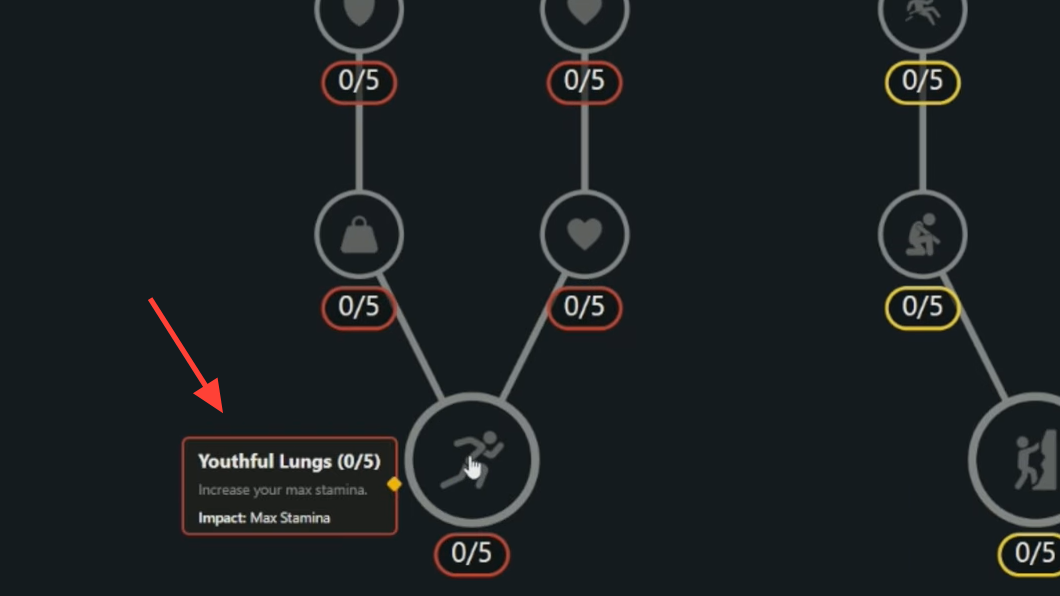
Why solo leans Conditioning-first
Going alone means fewer outs when things go wrong. Stamina fuels every escape, and weight punishes every good raid with a slower extract. Conditioning directly solves both, which is why it’s the most impactful early path. Once your stamina floor is solid, pick Mobility for better routes and escapes, then add Survival to cut exposure time and lower your profile while looting.
Solo builds that work from your first points
These paths prioritize reliability: stamina first, then route-building, then safer looting. Point counts are approximate; the order matters more than the exact total.
| Build | Early picks | Mid picks | Focus / payoff |
|---|---|---|---|
| Safe Solo Starter | Conditioning: Youthful Lungs → Proper Breathing | Conditioning: Three Deep Breaths; Mobility: Nimble Climber, Marathon Runner | Big stamina buffer first; faster climbs and sustained sprint to disengage cleanly |
| Balanced Utility | Conditioning: Youthful Lungs; Mobility: Nimble Climber | Mobility: Marathon Runner; Survival: Just Another Plant | Good baseline movement with a stealth lever for safer mid-raid looting |
| Solo Stealth | Conditioning: Youthful Lungs; Survival: Just Another Plant | Mobility: Nimble Climber, Marathon Runner, Agile Croucher; Survival: Silent Scavenger | Crouch-leaning movement, quieter interactions, and easier AI avoidance for low-profile routes |
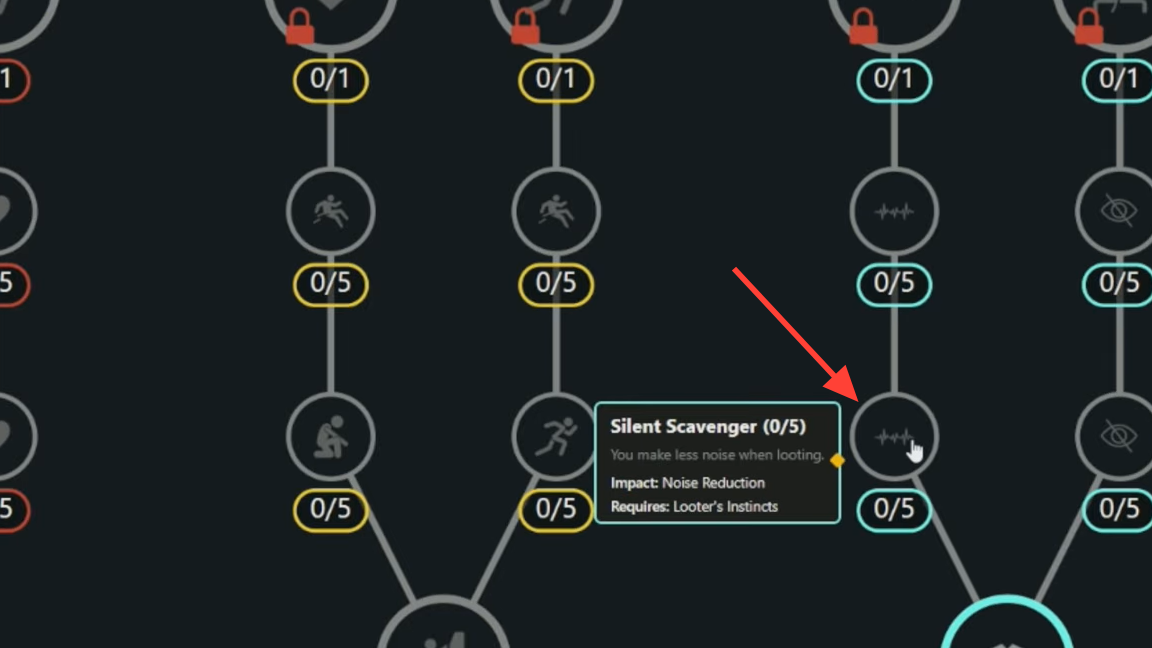
Talent highlights for solo players
- Youthful Lungs (Conditioning): Early stamina gain that smooths sprint→dodge→vault sequences.
- Proper Breathing (Conditioning): Further improves stamina reliability during sustained movement.
- Three Deep Breaths (Conditioning): Strong capstone for stamina-focused play; pairs well with heavy loads.
- Nimble Climber (Mobility): Faster climbs and mantles; shortens exposure windows on vertical routes.
- Marathon Runner (Mobility): Extends chases and, more importantly, escapes.
- Agile Croucher (Mobility): Quicker crouched movement to relocate quietly or loot under pressure.
- Just Another Plant (Survival): Reduced visibility while crouched; enables AI manipulation and safer mid-raid looting.
- Looter’s Instincts (Survival): Speeds up container reveals; you spend less time locked in an animation.
- Silent Scavenger (Survival): Lowers the noise of looting to avoid drawing nearby players.
These choices stack well: Conditioning keeps you moving, Mobility opens routes, and Survival reduces how often anyone notices you using them.
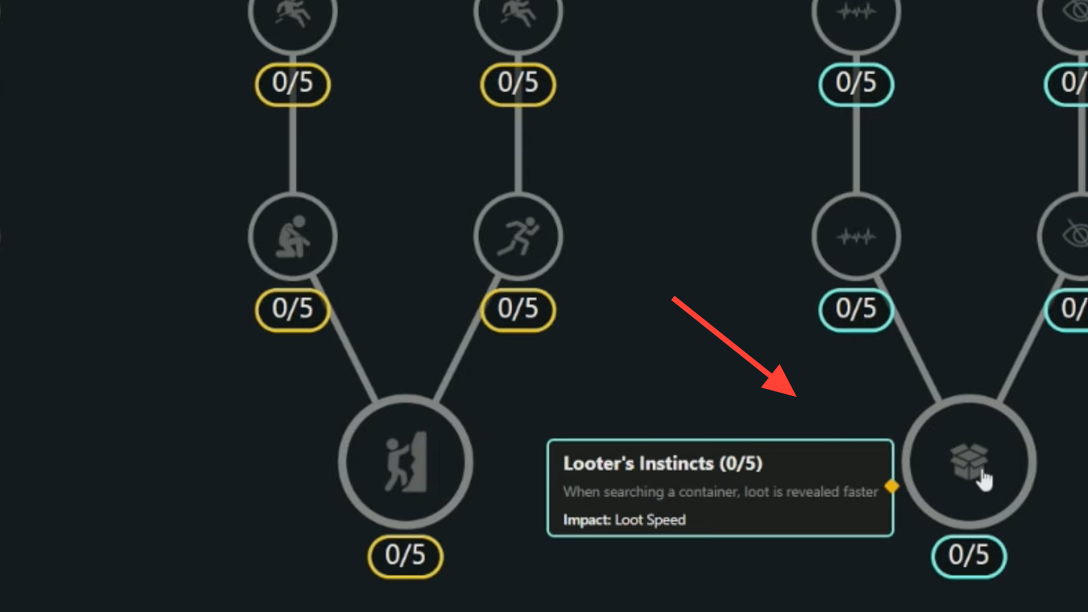
Point allocation strategy (first 20–25 points)
Solo-friendly pacing that feels strong early and scales well:
- Points 1–8: Conditioning core (Youthful Lungs → Proper Breathing). You want your sprint/dodge cycle to feel forgiving.
- Points 9–15: Add Mobility (Nimble Climber → Marathon Runner) to improve pathing and give yourself a dependable out.
- Points 16–20: Round out Conditioning with Three Deep Breaths or start Survival with Just Another Plant if you rely on stealth.
- Points 21–25: Choose based on playstyle — Survival (Silent Scavenger, Looter’s Instincts) for safer looting, or Mobility (Agile Croucher) for quieter relocations.
If you frequently extract over-encumbered, bias more points into Conditioning before expanding. The payoff is immediate: faster evac speed and fewer stamina-starved deaths.
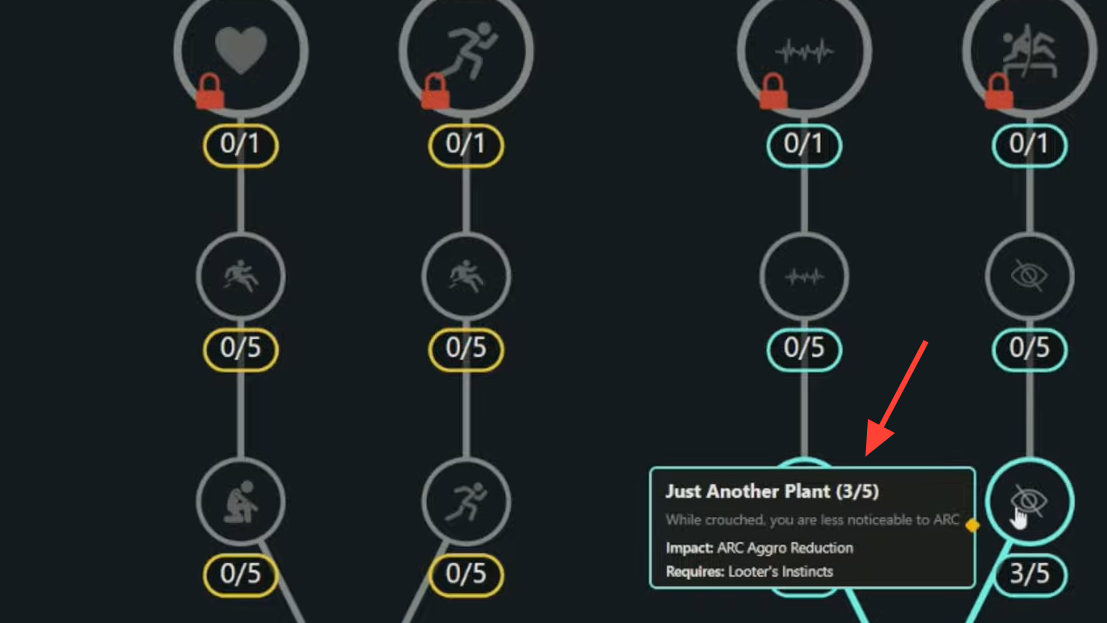
Common mistakes to avoid
- Beelining end-tree nodes too early: Early-tier talents often deliver more value per point during your first dozen raids.
- Ignoring Survival: Stealth and looting speed noticeably improve solo survivability and route tempo.
- Skipping situational picks: Encumbrance-friendly nodes seem niche until you’re crawling to extract with rare loot.
- Copying builds that don’t match your playstyle: Aggressive PvP, quiet scavenging, and speedrunning routes all want different mid-tree priorities.
What may change near launch
Pre-release tests can shake up tuning, and the final launch window (with a late-October release targeted, preceded by a mid-October server slam) leaves room for balance passes. The priorities here still hold: stamina and encumbrance first, then movement quality, then stealth and looting safety. Adjust the mix, not the philosophy.
The throughline for solo play is simple: buy yourself time and options. Conditioning reduces the cost of every mistake and every heavy backpack. Mobility turns the map into more viable exits. Survival cuts the noise and time you spend exposed. Put those together, and you’ll start finishing raids with fewer close calls — and more loot.

